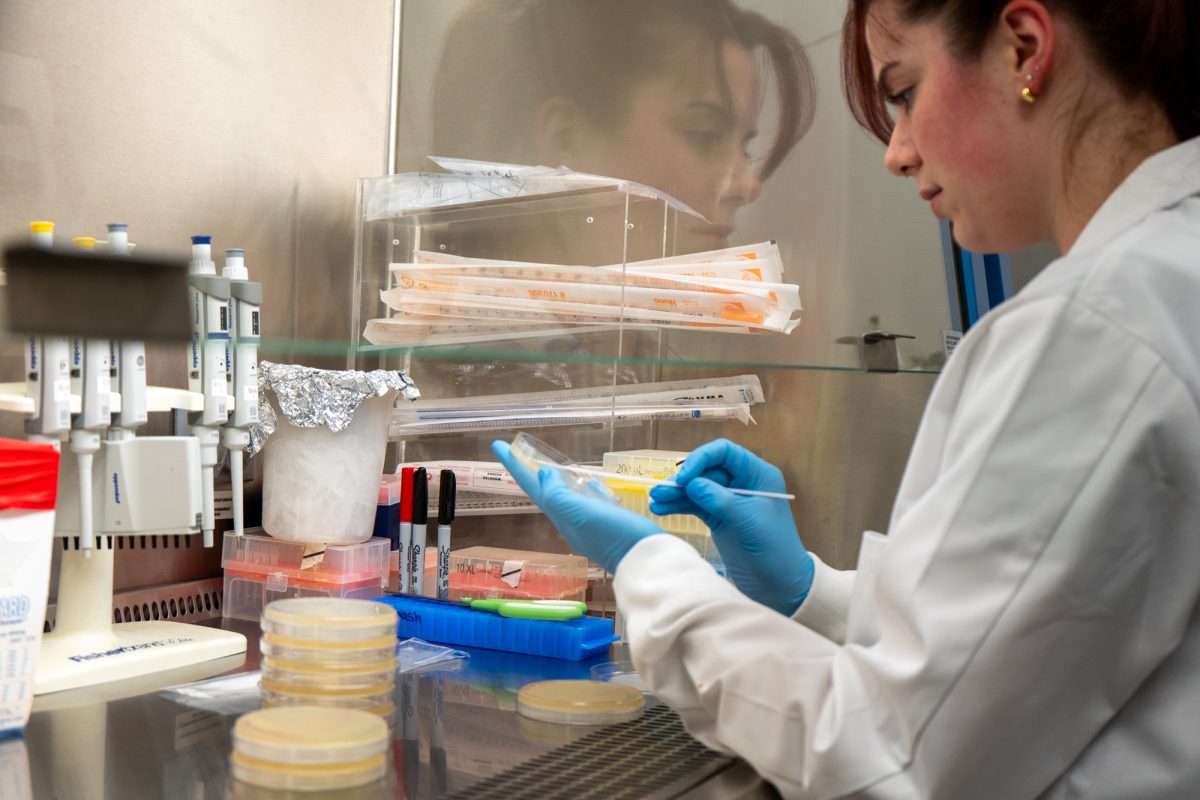In a seminar given in the Mitchell Institute building, a Texas A&M graduate student who typically does work on in the area of computational physics instead gave a lecture to professors and other graduate students about Blockchain technology and its connection to crypto technology.
Christian Cernov first became interested in crypto technology when he bought some bitcoin in 2014 and subsequently sold it before he knew anything about blockchain. Years later, he looked at all the attention that bitcoin in particular was receiving and decided to reinvestigate what he had bought.
“For me in particular, I bought Bitcoin a long time ago … and I sold it and I didn’t know anything about it,” Cernov said. “I was always interested in the computational aspect but I didn’t know the impact at that time.”
In the lecture, which he was invited to present because of his professor’s interest in blockchain, Cernov said the basic aspects of blockchain were outlined in 1991 by Stuart Haber’s and W. Scott Stornetta’s original abstract on the subject.
“If you understand these four things you understand what a blockchain is,” Cernov said. “What is meant by internet of value? Basically, one person can send another person any sort of digital asset via an exchange network without any intermediary. So a blockchain is basically a database that maintains an open distributed ledger such that anyone can view the ledger … So now that all of these nodes [computers in the network] have the ledger, there is a mechanism in which all of these nodes … agree that a transaction has been made … [and] the ledger itself cannot be changed.”
Cernov said the creator of bitcoin, only known by the moniker Satoshi Nakamoto, then implemented these blockchain concepts to build the groundwork for the peer to peer electronic cash system.
“[The creator] used the blockchain as a core component to bitcoin,” Cernov said. “Everything that the blockchain does is implemented here.”
Cernov said the importance of this implementation is it allows for the intermediary, which is usually a bank in most financial transactions, to be cut out of the process, saving cost and increasing privacy and anonymity. Additionally, it provides a much easier solution to the double spending problem and virtually eliminates the possibility of falsified or duplication of digital currencies.
Cernov said bitcoin is limited in its scope and there are much wider applications of this blockchain technology in the trading of other assets than can become digitized.
“That’s limiting our scopes to just digital tokens … in my opinion that is just a subset of what you can send — you can send any digital medium, any digital asset you can attribute value to,” Cernov said.
The lecture was attended by professors, graduate students and underclassmen, such as Jessica Jin, chemical engineering sophomore.
Jin said while she knew the speaker, she was interested in the technical aspects behind crypto-technologies such as blockchain.
“[The lecture] gave me a comprehensive view of all the applications of blockchain and a good introduction to the technical aspects behind it,” Jin said.
Chris Vincent, physics graduate student, said while the lecture was not enough to convince him to invest in bitcoin or other cryptocurrencies, he learned about the much wider applications of blockchain technology.
“It’s not just the cryptocurrencies,” Vincent said. “It’s digital assets in general that are all being put together. It’s not trying to meld disparate things together.”
Blockchain: the technology behind cryptocurrencies
February 19, 2018
0
Donate to The Battalion
Your donation will support the student journalists of Texas A&M University - College Station. Your contribution will allow us to purchase equipment and cover our annual website hosting costs.
More to Discover







